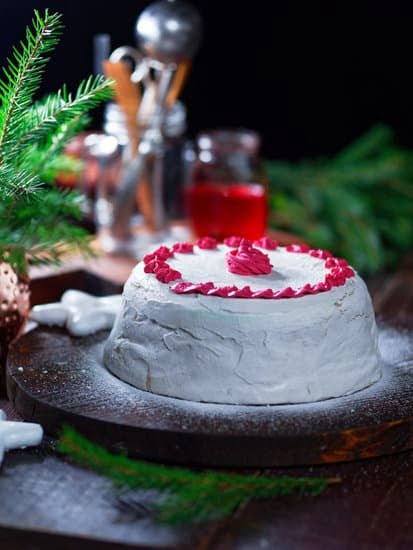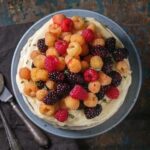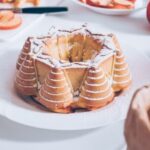A checkerboard cake is not only a delicious treat but also a visually stunning masterpiece that adds excitement to any occasion. The concept of this cake has gained popularity in the baking world due to its unique presentation and eye-catching design. The checkerboard pattern, with alternating layers of different flavors, creates a visual experience that is both pleasing and intriguing.
While decorating a checkerboard cake might seem like a daunting task, the end result is well worth the effort. This article will guide you through the process, providing step-by-step instructions to help you achieve a professional-looking creation. From preparing the cake batter to building the checkerboard layers and finally adding decorative touches, we will cover each stage in detail.
One of the main challenges in decorating a checkerboard cake lies in achieving clean lines and a flawless finish. However, with some patience and attention to detail, anyone can master this technique.
By following our tips and techniques, you will gain confidence in your baking skills and be able to create a showstopping checkerboard cake that will impress your friends and family at any event or celebration. Let’s dive into the world of checkerboard cakes and uncover the secrets behind their extraordinary visual appeal.
Preparing the Cake Batter
Preparing the Cake Batter:
Creating a checkerboard cake requires a firm cake batter that holds its shape during baking and assembly. This is crucial to achieving clean, distinct layers in the final product. To ensure success, here are some tips on preparing the two different flavors of cake batter required for a checkerboard cake.
Step 1: Choose Your Flavors
Select two complimentary flavors of cake batter, such as chocolate and vanilla, or strawberry and lemon. The contrasting colors will enhance the visual appeal of the checkerboard pattern.
Step 2: Prepare the Batters
Follow your chosen recipes for each flavor of cake batter. It’s important to use recipes that have a sturdy texture to prevent blending of colors during baking. Be sure to mix each batter well, incorporating all ingredients thoroughly.
Step 3: Divide and Color the Batter
Once you have prepared both flavors of cake batter, divide each into three equal portions. You will have six portions in total. This is where creativity comes into play. Use food coloring or extracts to color three portions of each flavor, creating different shades that will form your checkerboard pattern.
Step 4: Pouring and Layering
Now it’s time to create the layers. Begin by greasing your checkerboard cake pans with butter or non-stick spray.
Using one pan at a time, start by pouring one colored portion of each flavor into the innermost ring of your pan’s design. Spread it evenly using a piping bag or spatula. Next, pour another colored portion into the middle ring and spread it evenly as well. Finally, pour the third colored portion into the outer ring.
Repeat this process with the remaining pan until both pans are filled with alternating colors in three concentric rings.
Remember to wipe off any excess batter between adding different colors to ensure clean lines within your pattern.
By following these step-by-step instructions for preparing and dividing your cake batter appropriately, you’re well on your way to creating a stunning checkerboard cake. The visually appealing pattern will impress your friends and family at any occasion.
Building the Checkerboard Layers
To achieve the distinct checkerboard pattern in a cake, special checkerboard cake pans are used. These pans have dividers that allow you to pour and layer different colored cake batters in a precise and organized manner. This technique creates a visually appealing and impressive design that will surely impress your guests.
Here is how you can build the checkerboard layers for your cake:
- Prepare the different colored cake batter according to your chosen flavors. It’s important to use firm cake batter that holds its shape during baking and assembly. This will ensure clean and defined lines between the checkerboard sections.
- Grease and flour your checkerboard cake pans to prevent the cakes from sticking. Place the divider insert into one of the pans.
- Pour a portion of one colored cake batter into each section of the divided pan. Use a piping bag or spoon to neatly fill each section without mixing the colors.
- Remove the divider insert carefully, making sure not to disturb the filled sections. Place it into another greased and floured pan.
- Pour a portion of the contrasting colored batter into each section of this second pan, following the same process as before.
- The two pans with alternating colored sections are now ready for baking. Follow the baking guidelines mentioned earlier in this article to ensure evenly baked layers.
- Once baked, remove both pans from the oven and let them cool completely on wire racks before proceeding to decorate your checkerboard cake.
To create clean lines between each color section, you can use a piping bag or offset spatula when pouring in each batter layer. This helps control the placement of each color, ensuring they don’t mix together and blur the pattern.
By following this step-by-step process, you’ll be able to build beautiful and precise checkerboard layers for your cake, setting it apart from traditional layered cakes.
| Checkerboard Layer | Color |
|---|---|
| First Layer | Red |
| Second Layer | Yellow |
| Third Layer | Blue |
Baking and Cooling
Baking Guidelines
To achieve evenly baked checkerboard layers, it is important to follow some baking guidelines. Preheat your oven to the recommended temperature stated in your cake recipe. This will ensure that the cake bakes properly and maintains its shape during the decorating process. It is also crucial to use an oven thermometer to ensure that the temperature is accurate.
When placing the cake pans in the oven, make sure to leave enough space between each pan for proper air circulation. This will help prevent uneven baking and promote even heat distribution. Avoid overcrowding the oven with too many pans at once.
Testing for Doneness
Properly testing for doneness is essential to ensure your checkerboard layers are baked all the way through. The most common method is inserting a toothpick into the center of each layer. If it comes out clean or with just a few crumbs attached, your cake is done.
Another method is gently pressing the top of the cake with your finger. If it springs back when touched lightly, it means it’s fully baked. However, if it leaves an indentation or feels spongy, it needs more time in the oven.
Cooling Completely
After removing the cakes from the oven, allow them to cool completely before starting the decorating phase. Cooling allows for easier handling and prevents any melting of frosting or decorations that may be added later on.
To cool your cakes effectively, invert them onto a wire rack immediately after taking them out of their pans. This helps prevent condensation from forming on the bottom of the cakes and turning them soggy. Let them sit undisturbed until they reach room temperature.
It’s important not to rush this step as warm cakes may crumble when handled or stacked together during assembly. If you’re short on time, you can place them in a refrigerator for faster cooling; however, be vigilant to avoid over-chilling them.
By following these baking and cooling guidelines, you will achieve evenly baked checkerboard layers that are ready to be leveled, filled, and decorated with finesse.
Leveling and Filling
Once your checkerboard cake layers have cooled completely, it’s time to level them to ensure a neat and even cake. Leveling your layers is an important step that helps in achieving a professional-looking finished product. To level your cake layers, you will need a long serrated knife or a cake leveler.
Start by placing one layer on a sturdy surface. Use sawing motions with your knife or cake leveler to trim off any domed or uneven parts on top of the layer until it is completely flat. Take care not to remove too much cake during this process.
Now that you have leveled your cake layers, it’s time to move on to filling them. The filling plays an essential role in maintaining the integrity of the checkerboard pattern when the cake is sliced. It also adds flavor and moisture to each bite. A stable filling such as buttercream or ganache works best for this purpose.
Prepare your chosen filling and transfer it into a piping bag or use an offset spatula for spreading. Begin by placing one leveled layer on your serving plate or cake board. Pipe or spread a generous amount of filling onto the surface of this layer, making sure to stay within its edges.
Next, take another leveled layer of opposite-colored batter and place it directly on top of the first layer. Be careful while aligning it so that both colors are properly matched up. Repeat with alternating colors until all your layers are stacked.
By following these instructions for leveling and filling your checkerboard cakes, you ensure that each slice showcases its unique design with clean lines between flavors.
Crumb Coating
Crumb coating is a crucial step in the process of decorating a checkerboard cake as it helps to achieve a smooth and professional finish. The purpose of crumb coating is to seal in any loose crumbs on the outer surface of the cake, creating a clean canvas for further decoration. This technique involves applying a thin layer of frosting to the cake, acting as a base before the final layer of frosting or fondant is added.
To begin the crumb coating process, it is important to have a firm and chilled cake to work with. This will prevent the cake from crumbling or tearing while applying the frosting. Using an offset spatula, start by placing a dollop of frosting on top of the cake and spreading it evenly across the surface. Then, apply a thin layer of frosting around the sides of the cake, working from top to bottom.
Tips for achieving a clean and even crumb coat include using an offset spatula instead of a regular knife or spoon. The offset spatula allows for better control and smoother application of the frosting. Additionally, it is helpful to constantly wipe off any excess crumbs that may get caught in the spatula during spreading.
After applying the crumb coat, place the cake in the refrigerator for about 15-20 minutes to allow the frosting to set. This will make it easier to add another layer or continue with further decorations without disturbing the first layer.
Overall, mastering the technique of crumb coating is essential in achieving a polished and professional look for your checkerboard cake. It ensures that any loose crumbs are sealed in while providing a smooth base for additional layers of frosting or fondant. Remember to take your time and use an offset spatula for best results.
| Technique | Tips |
|---|---|
| Use an Offset Spatula | Provides better control and smoother application of frosting |
| Constantly wipe off excess crumbs on spatula | Prevents crumbs from getting caught in the frosting during spreading |
| Chill the cake after applying crumb coat | Allows the frosting to set and make it easier to add additional layers or decorations |
Fondant Decoration
Fondant decoration is a popular choice when it comes to decorating a checkerboard cake. Fondant allows for precise and creative designs, giving the cake a smooth and flawless finish. To start the fondant decoration process, it is important to knead the fondant until it becomes soft and pliable.
To achieve a smooth texture, lightly dust your work surface with powdered sugar or cornstarch before rolling out the fondant. Take a portion of the fondant and roll it into a ball. Using a rolling pin, roll out the fondant into a thin, even layer. Make sure to lift and turn the fondant frequently to prevent it from sticking to the surface.
Once you have rolled out the fondant to your desired thickness, carefully drape it over the crumb-coated cake. Starting from the center, gently smooth the fondant onto the sides of the cake using your hands or a smoother tool. Be cautious not to stretch or tear the fondant during this process.
To achieve a seamless finish, trim off any excess fondant using a sharp knife or pizza cutter. Take your time when trimming, following along with the shape of the cake for clean edges. Smooth any remaining imperfections by gently rubbing them with your fingertips or using a smoothing tool.
With fondant covering your checkerboard cake, you now have a perfect canvas for additional decorations if desired. You can use edible paints, stencils, or piping techniques to create intricate designs on top of the fondant surface. Let your creativity run wild as you add different colors, shapes, or themes that will personalize your checkerboard cake and make it truly stand out at any occasion.
Checkerboard Design Techniques
Checkerboard cakes are not only visually stunning, but they also provide an opportunity for decorators to showcase their creativity and personal style. Once the cake is assembled and covered with fondant, it’s time to explore various design techniques to enhance the checkerboard pattern and make the cake truly unique.
Use of Edible Paints
One way to add depth and dimension to a checkerboard cake is by using edible paints. Edible paints are food-safe coloring options that allow decorators to hand-paint intricate designs directly onto the fondant surface. This technique opens up a world of possibilities in terms of colors, patterns, and themes.
To use edible paints on a checkerboard cake, start by selecting a variety of brushes that range in size and shape. This will give you more flexibility when creating different strokes or details. Begin with a base coat in one color and allow it to dry completely before adding additional layers or designs.
For more intricate details such as flowers or delicate designs, consider using fine-tipped brushes or even thin piping bags filled with paint. Remember to let each layer dry completely before moving on to prevent smudging or bleeding colors.
Stenciling
Stenciling is another popular technique used in decorating checkerboard cakes. Stencils come in various designs and sizes, allowing decorators to create professional-looking patterns with ease. To stencil on a fondant-covered checkerboard cake:
- Secure the stencil onto the fondant surface using small pieces of tape.
- Dab a small amount of buttercream icing onto a clean foam pad.
- Dip a stencil brush into the buttercream icing then gently tap off any excess.
- Working from the outside edges towards the center, gently dab the stencil brush over the cut-out areas of the stencil.
- Carefully remove the stencil while ensuring not to smudge the design.
- Repeat this process as many times as desired, using different stencils or repeating the same design for a cohesive look.
Piping
Piping designs onto a checkerboard cake can create intricate and eye-catching patterns. This technique involves using decorating bags fitted with various piping tips to add lines, dots, or other decorative elements to the cake.
To pipe on a checkerboard cake, start by preparing buttercream icing in your desired colors. Fit a piping bag with a small round tip for fine lines or a star tip for more texture. Gently squeeze the piping bag to release icing while carefully guiding it around the design area.
Common piping techniques include basket weave patterns, rosettes, dots, or even writing messages or names. Use different colors of icing to further enhance the checkerboard effect and add dimension to your design.
Remember that practice makes perfect when it comes to piping designs onto cakes. Don’t be discouraged if your first attempts are not flawless – keep practicing and experimenting with different techniques until you achieve the desired results.
By incorporating these checkerboard design techniques into your cake decoration process, you can take your checkerboard cake to the next level. Whether you choose to paint intricate details, stencil beautiful patterns, or pipe stunning designs onto your fondant-covered masterpiece, these techniques will surely impress guests and make any occasion truly memorable.
Conclusion
In conclusion, decorating a checkerboard cake is a fun and visually appealing way to elevate any occasion. Throughout the step-by-step process, we have emphasized the importance of using firm cake batter, creating clean lines between the layers, and achieving a smooth and professional finish. By following these guidelines, you can create a checkerboard cake that is not only beautiful but also delicious.
The possibilities for creativity with a checkerboard cake are truly limitless. Experiment with different flavors, fillings, and decorations to make each cake unique to your taste and style. Consider incorporating edible paints, stencils, or piping techniques to enhance the checkerboard pattern and add intricate designs on the fondant surface. Whether you’re showcasing vibrant colors or elegant monochromatic shades, let your imagination run wild.
As you embark on your own checkerboard cake masterpiece, remember that practice makes perfect. Don’t be discouraged if your first attempt doesn’t turn out exactly as planned. With each try, you will gain more confidence in building and decorating this stunning dessert. So go ahead and grab your mixing bowls and spatulas – it’s time to create a memorable checkerboard cake that will dazzle both visually and gastronomically.
Frequently Asked Questions
How do you keep a checkerboard cake from falling apart?
To keep a checkerboard cake from falling apart, there are a few key tips to follow. Firstly, it is essential to properly grease and flour the baking pans before pouring in the cake batter. This step ensures that the cakes easily come out of the pans without sticking. Secondly, it’s important to allow the cakes to completely cool before assembling the checkerboard design.
Warm or hot cakes can be fragile and more prone to breaking apart. Additionally, using a serrated knife or a cake leveler to trim off any uneven tops can help create flat surfaces for stacking the layers together. Lastly, when assembling the cake layers, it’s crucial to use a sturdy frosting between each layer to provide stability and prevent shifting or collapsing.
How do checkerboard cake pans work?
Checkerboard cake pans work by creating distinct layers of differently colored cake batter within one pan. These specialized pans typically consist of two or more rings with alternating colors (usually black and white) placed inside them. The rings fit snugly within the pan, separating each color section from one another while allowing them to bake together in perfect harmony.
As the cakes bake, each colored section rises separately but doesn’t mix with its neighboring sections due to the barriers created by the rings. Once baked, you can remove the rings, revealing precisely defined checkered patterns on each layer of cake.
What is the history of the checker cake?
The history of checkerboard cake dates back several decades and has its roots in traditional European baking techniques. While it’s challenging to pinpoint an exact origin, checkerboard-style cakes became popular during the mid-20th century as home baking gained popularity across America and Europe. This style of cake was seen as both visually appealing and unique due to its distinctive checker pattern when sliced open.
Over time, various recipes and adaptations emerged for making checkerboard cakes using different flavors and colors of cake batter. Today, these cakes remain a nostalgic favorite for many people around the world, not only for their taste but also for their captivating appearance.

Welcome to our cake decorating blog! My name is Destiny Flores, and I am the proud owner of a cake decorating business named Cake Karma. Our mission is to provide delicious, beautiful cakes for all occasions. We specialize in creating custom cakes that are tailored specifically to each customer’s individual needs and tastes.





